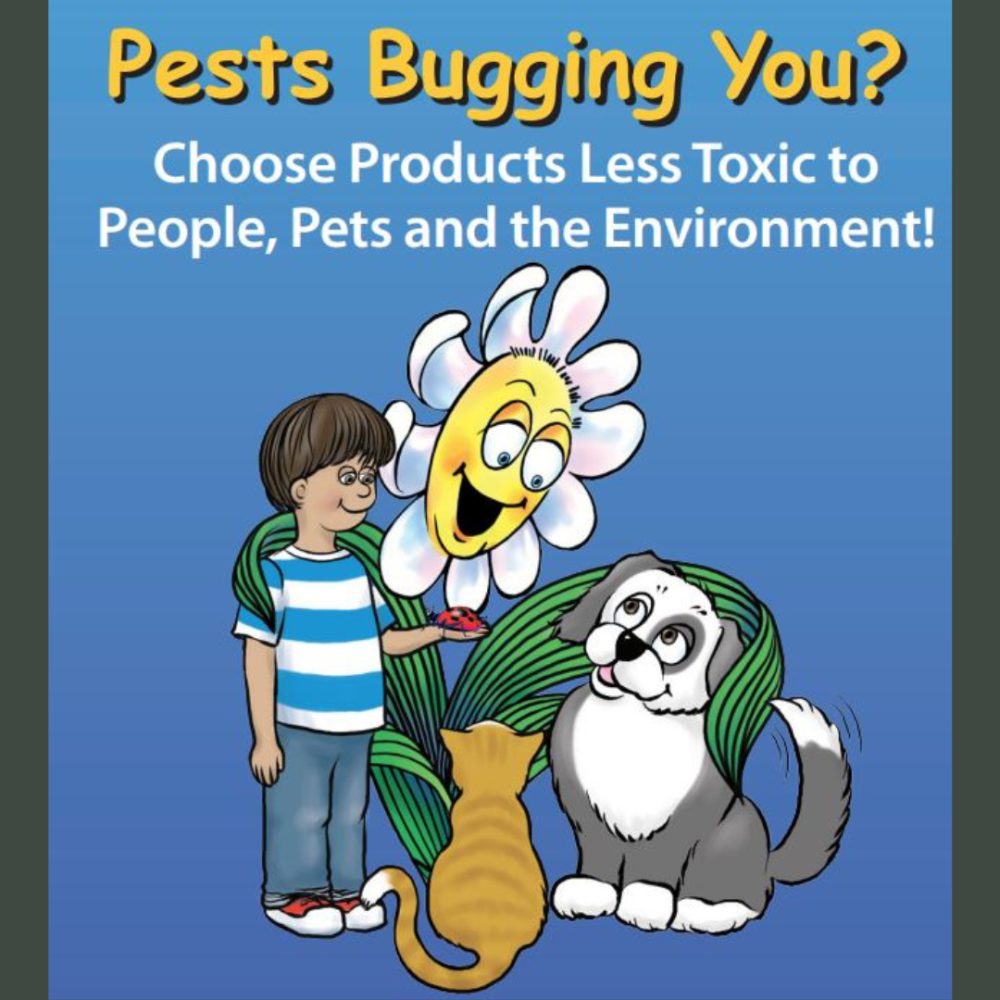
Choose Products Less Toxic to People, Pets and the Environment!
Looking to maintain a lovely home and garden and still protect the health of your family, your pets, and the environment? Then read on! This article can help you identify methods and techniques for managing pests without using any pesticide products. The City of Goleta strongly discourages the use of herbicides, pesticides, or fertilizers on your home garden, as these products can degrade water quality and pollute local waterways. Fortunately, there are great methods of pest control that don’t rely on toxic chemicals that harm watersheds!
Not All Alternatives Are the Best Choice for Water Quality!
Be aware that some products that are advertised as alternatives to conventional pesticides, e.g., synthetic pyrethroids, are actually very toxic to aquatic life. These pyrethroids may be listed on products under a variety of names such as bifenthrin, cyfluthrin (including betacyfluthrin), cypermethrin, deltamethrin, esfenvalerate, lambda-cyhalothrin, permethrin, and tralomethrin. Though not used as widely outdoors (therefore less of a threat to water quality), pyrethroids such as resmethrin and tetramethrin can be found in aerosol products. Aerosols disperse chemicals in a way that significantly increases the risk of exposure to unintentional targets—including you, pets, and your family.
Integrated Pest Management: A Safer Way to “Bug” Pests
Aphids on your roses, ants in your cereal, fleas on the dog—we’ve all been bugged by pests. For many people, the first response to pest problems is to reach for the bug spray. But the chemical products we use to control these pests can cause serious health and environmental problems, especially where children are concerned. There is a better way to solve pest problems, and it is called Integrated Pest Management or IPM.
What is Integrated Pest Management (IPM)?
IPM is an effective and environmentally friendly approach to pest management that uses a combination of strategies to keep pest damage at an acceptable level. With IPM, the focus is on preventing pest problems through healthy gardening practices and avoiding the use of chemicals when they are not really needed. The goal of IPM is to manage garden and household pests with as little impact to our families, pets, and the environment as possible.
Why Should I Use IPM?
When rain and over-watering wash fertilizers, pesticides, and herbicides into storm drains, they wind up in local creeks and waterways. If these products are poured (or the containers are rinsed) down household drains, many of the chemicals cannot be removed by sewage treatment plants—so again they end up in the water. This growing chemical pollution has an impact on the health of our families and pets, it degrades the environment, and it harms wildlife. IPM uses chemical controls only as a last resort, relying on the least-toxic chemicals possible.
Also, keep in mind that 98% of the bugs in our gardens are actually working hard for us by eating pests, pollinating plants, recycling dead plant material into healthy soil, and providing food for wildlife. Pesticides kill these helpful bugs along with the pests.
How Does IPM Work?
IPM emphasizes checking your garden and home often to catch pests before they become a major problem. When you do find a bug, make sure it is actually a pest. Many bugs and their larvae may look ferocious but are actually good for your garden. Before trying to get rid of it, ask yourself if real damage is taking place or if the damage is at an acceptable level. When you do need to control pests, try a combination of the following IPM techniques:
Horticultural Controls: Keep gardens healthy and pest free by practicing the following: select native plants and/or disease resistant plants that are appropriate to your area, choose the right plant for your type of soil and weather conditions, rotate crops, clean up overripe fruit and diseased leaves, use compost or slow-release fertilizers, and mulch to prevent weeds.
Physical Controls: Hand pick pests, protect delicate seedlings with fabric row covers, attract and trap pests with sticky traps, spray plants with a hose to dislodge and kill pests, and caulk or seal up cracks where bugs might enter the house.
Biological Controls: Many of the bugs found naturally in a healthy garden, including dragonflies, spiders, ladybugs, praying mantids, and lacewings, eat huge numbers of pests. Plants with small flowers and lots of pollen, like yarrow, alyssum, dill, and buckwheat, will attract these “good bugs” to your garden.
Chemical Controls: If a chemical control is needed at all, choose a less-toxic product such as insecticidal soaps, horticultural oils, and boric acid. Use only the amount needed, and keep these products safely stored in the original container.
Find more information on Integrated Pest Management (IPM) in our OWOW brochure.
The City of Goleta along with the Cities of Buellton, Carpinteria, Solvang, Santa Barbara, Santa Maria, and the County of Santa Barbara have partnered with the OWOW organization to promote the use of less-toxic products in an effort to reduce pesticide pollution in our communities. By reducing pesticide use and the use of less-toxic products around the home, you can help reduce pesticides and other pollutants such as herbicides and fertilizers from being picked up while watering or when it rains and transported to the nearest storm drain inlet and into our waterways. The OWOW website is a great resource for finding less-toxic products to use around your home or garden.

